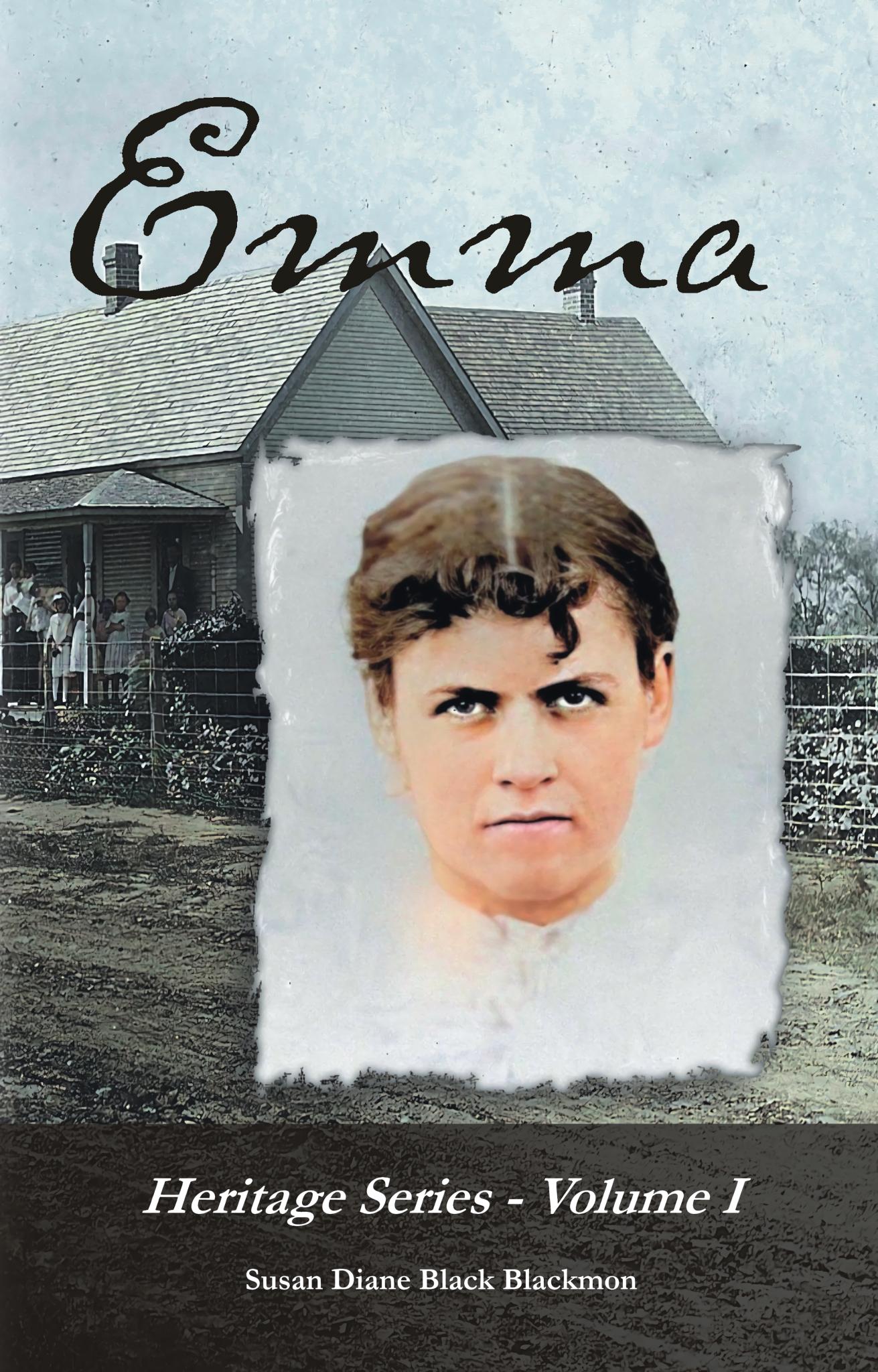
Emma: The Heritage Series, Volume 1
Susan Diane Black Blackmon
November 11, 2022
eBook, ASIN: B0BM5HKLX3, 247 pgs.
“It wasn’t age or distance that mattered – love was all that mattered.”
Emma by Susan Diane Black Blackmon is the first in the Heritage Series. With a strong historical foundation, this fiction flows like a traditional fairy tale that has both dark and light elements, providing readers with an early 1900s Texas narrative, sweet romance, and an evil stepmother. Thirteen years have passed since the death of her mother. The youngest of eighteen children, Emma Jackson is now sixteen and loves her papa and younger half-sister but not her stepmother, Matilda.
Jane was the love of Ben Jackson’s life, but when he lost her and their nineteenth baby during childbirth, he became adrift and neglectful of the family who still needed him. Evil stepmother personified, Matilda set her villainous plan in motion even before Ben married her and brought her home to be his children’s new mother. While his children never trusted Matilda—and for good reason—Ben simply succumbed to caring for his family the only way he knew how, without his precious Jane by his side.
The pacing in Emma is mainly moderate and steady but accelerates as Matilda’s malevolence intensifies. Blackmon’s writing style is clean and uncomplicated, making Emma an ideal choice for readers of all ages, including middle grade and young adult readers who enjoy an interesting Texas fiction based on real-life people and events.
In Emma, Blackmon has crafted two stories in one, with Emma visiting her older sisters and falling in love with Charley, and with her father finally deciding to rid himself of the malicious woman he never should have married. But did Ben wait too long to set his household to rights? Will Matilda finally strike that final blow and declare her carefully plotted plan a success? The author meticulously builds the tension and drama by presenting the main characters and their backstories. She then introduces tragedy and antagonism, leading readers down that age-old path of grief, greed, heartache, and redemption, yet keeping the overall plot rooted in both familial and romantic love.
Emma can rightly be likened to Cinderella. However, this story resembles Little House on the Prairie by Laura Ingalls Wilder as well, with the very act of survival in a harsh land during a harsh time providing more than enough turmoil, hardship, and even celebrations, such as box socials and courtship. Add a woman who chooses to destroy others to satisfy her avarice, and Emma quickly becomes a modest yet powerful parable and cautionary tale. Rising above and even overcoming wickedness will always resonate with readers as relatable and meaningful, with Blackmon nimbly delivering the effective trope of good versus evil and so much more in this first fascinating book in the Heritage Series. At the end of this historical fiction, the author includes an extensive family tree; an interesting description of mad stones; and, thankfully, a recipe for the pear pie that is so popular in Emma.
